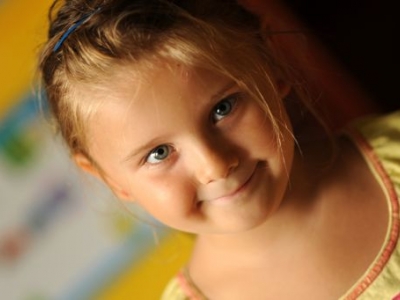
Butterfly Hands
A useful little game that's helped Jim French's young children learn self-control.
One of the prayers my wife and I have for our children is that they learn, develop and exercise self awareness and control. Our desire has come from a few sources:
- The Bible - we want our children to keep in step with the Holy Spirit (Gal 5:16) and to display the fruit of the Spirit’s work in their lives. An important aspect of this is self control (Gal 5:23)
- Neurology - we are aware of the importance of developing our children’s brains to enable them to control our more primal instincts like anger, by exercising control over these strong emotions
- Psychology - being mindful (a focus on the present) is a useful discipline to develop self awareness and good mental health.
One practical way we have tried to teach and develop this in our children who are 2 and 4 years old is what we call “butterfly hands”. This is getting our children to interweave their fingers and clasp their hands together.
How we play 'butterfly hands'
When our children get angry and frustrated we ask them to do their butterfly hands, to put them in their laps and to breathe deeply, first letting out and then drawing a deep breath in, and then regulating their breathing. This may sound like we’re hippies, but it works!
We have taught our children how to do butterfly hands by making a game of it. There are three simple steps:
- We first ask them to make a butterfly with their hands (interweave their fingers).
- Next, we ask them to make the butterfly fly up into the air (move their fingers up and down like a butterfly flying).
- Lastly, we say to bring the butterfly down to rest in the flowers (they bring their hands to rest in their laps)..
This is a fun game, and now our kids know what to do each time we ask them to make butterfly hands.
How we use 'butterfly hands'
We use 'butterfly hands' in a number of ways. Here's a couple of them:
- At the dinner table, when there is an angry outburst, butterfly hands work well to diffuse those meal time situations. They make their butterfly hands and place them on the table in front of them giving a mindful focus. And once calm and in control of their emotions we are able to talk with them and give instructions about eating certain vegetables, or finishing their meal etc. This technique works in lots of situaitons when they are angry, upset and out of control (tantrums), helping them to calm down and take control of their emotions.
- We also use it when we go shopping. This aspect of butterfly hands has proven to be the most successful. Every time we walk into a shop we tell our children to make their butterfly hands. This stops them touching and picking up things that may get damaged. A number of shopkeepers have commented about this and its effectiveness. One owner of a tea shop was fascinated with how well it worked. She commented that what usually happens in her shop is parents tell their children not to touch, then ask again a number of times, threaten them, and then eventually leave - which is not what the shopkeeper or the parents want.
We are not wanting our children to be unemotional or to totally suppress their emotions, but butterfly hands help our children to exercise self control over their emotions. It also enables them to develop focus and concentration that brings them to an awareness of the present. It teaches them to show respect for other people’s property, which is an expression of love. In this way, we are prayerfully and practically attempting to work with God’s Spirit in our children’s lives in developing the fruit of the Spirit, of which love and self control significantly “bookend” the platter in Galatians 5:22-23.
For more articles from Growing Faith, subscribe to our monthly e-newsletter.
To hear about the latest books and resources from Youthworks Media, subscribe here.







